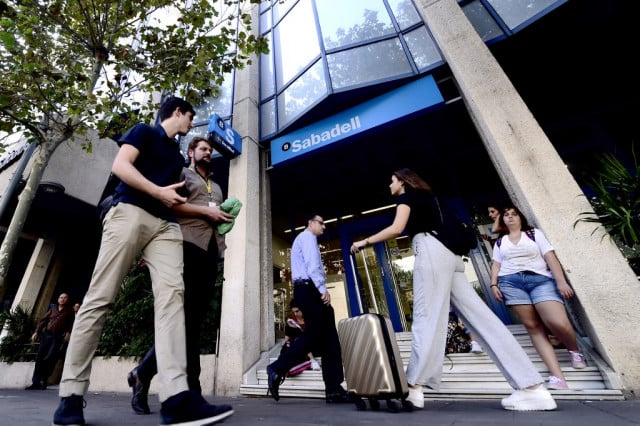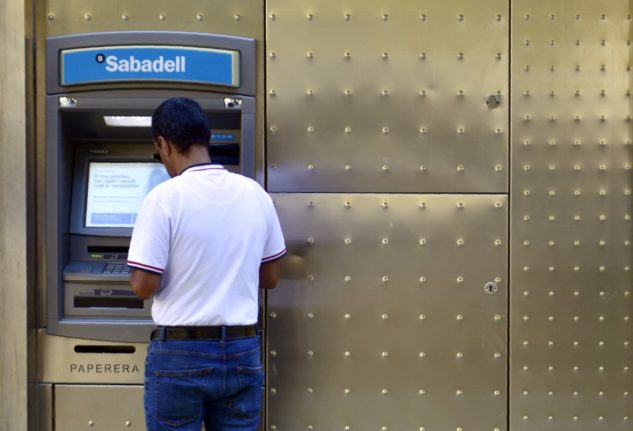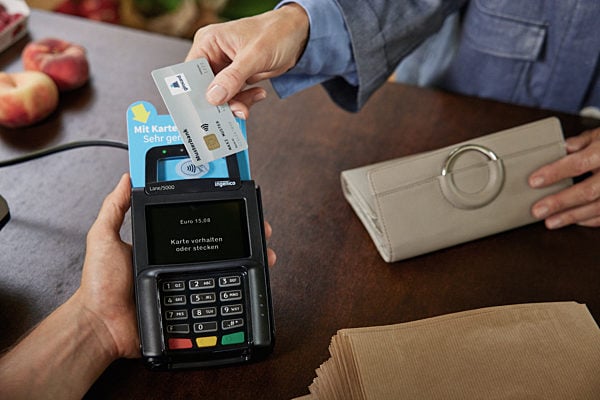If you’re a resident in Spain or planning on becoming one soon, the chances are you’ll have to open a Spanish bank account.
Even though EU banking regulations should facilitate being able to use an overseas account in Spain for EU nationals, there are many cases in which anyone – Spanish, European or otherwise – will be asked to set up direct debits (domiciliación) for utility bills, rent, social security payments and other expenses from a Spanish account.
It also makes a lot of sense if you’re spending most of your time in Spain and your overseas bank charges you for every ATM withdrawal you make.
With that said, we have to admit that choosing a Spanish bank account isn’t at all straightforward.
Whether it’s due to the vast array of choices available or that Spanish financial jargon and small print tends to be very convoluted, pinpointing ‘un banco’ that suits your particular needs as a foreigner in Spain takes some research and asking around.
Before you embark on that challenging mission, we’ve enlisted the help of our readers so that everyone can share their personal experiences and tips on Spanish accounts with each other.
Firstly, the things to watch out for with banks in Spain.
Most of the respondents acknowledged that Spanish banks often charge hidden costs for everything from direct debit to not having enough money paid in on a regular basis.
Over the past two years, this has become the norm among most of Spain’s big banks, with clients expected to commit to financial products and meet certain conditions to be able to have an account that’s free of charges.
READ MORE:
- The new Spanish bank account fees you need to know about (and how to avoid them)
- Which Spanish bank accounts are free of charges?
Pay special attention when opening ‘cuentas sin nómina’ (accounts without salary) as most Spanish banks that offer these accounts will ask you to pay in a certain amount of money every month or trimester if you don’t want be charged. These types of current accounts also tend to have more requirements and hidden costs than salary accounts.
According to Guillermo Vicandi, cofounder of Banking app BNEXT, “Spanish banks base their strategy on selling accounts that are apparently free of charges, but with lots of requirements.
“The first trick they play to get their hands on those extra costs is to include conditions that most people are unaware of or aren’t be able to meet, because they don’t read the extremely small print”.
Spain’s six biggest banks alone (Santander, BBVA, La Caixa, Bankia and Sabadell) made more than €5billion in hidden costs alone in 2017.
Our advice as well as our readers’ is to insist on getting the lowdown on these “comisiones ocultas” before opening the account.
There were also several respondents who said they hadn’t been informed of changes to account requirements or branch closures.
Make sure you’re signed up to online alerts with your bank, and if you’re receiving post from them in the mail, don’t forget to give them your new address if you change home.

What Spanish bank account should I choose?
If you need to open a ‘cuenta sin nómina’ because you aren’t a salaried employee in Spain, bear in mind that most of them are online accounts that either have very few branches across the country or may not grant you access to in-person customer service at the bank due to their status as online accounts.
Some examples of these are Santander’s Openbank, Cajamar’s Wefferent account, Bankia Cuenta ON and then the non-salaried accounts offered by smaller Spanish banks Abanca (Cuenta Clara), Coinc (Cuenta Coinc) and ActivoBank (Cuenta Activa), although bear in mind that Spanish financial entities are quick to phase out certain favourable accounts when the conditions no longer suit them.
The reason why you may not be eligible for the full array of accounts that Spanish banks have to offer is because some of them will require you to submit proof that you’re signed up to Spain’s social security system within 30 days of opening your account, due to a Spanish law on the Prevention of Money Laundering and the Financing of Terrorism.
If you’re self-employed you will be able to provide proof that you’re a taxpayer, but if you’re a non-working resident only a handful of banks will let you open an account, probably with the condition of having to deposit regular money into the ‘cuenta’.
If you are working, the account most of our readers spoke highly of was Banco Sabadell’s Cuenta Expansión, which they say offers no charges on current accounts or credit cards, but does have some requirements.
 Photo: AFP
Photo: AFP
Smaller banks mentioned by readers received more praise on average than Spain’s banking giants for having lower or fewer charges and not as many hidden costs.
For former Barcelona resident Alexandra Osvath, Evo is a great choice for travellers. “Really low or no transaction fees on transfers to foreign accounts. Evo was more advantageous than bigger banks like La Caixa (I had an account there and closed it).”
Mickey Minchs also from Barcelona speaks highly of N26, a Berlin-headquartered online bank that offers its services across the Eurozone and the UK.
“As their ad says, ‘bank without the bullshit’,” he says of the bank that’s partnered up with Transferwise and offers a free account, free cash withdrawals and no charges on foreign transactions.
The only problem Minchs says he’s faced with having a German IBAN is that it’s sometimes given him problems when setting up direct debits for Spanish utilities.
Another bank with similar perks to N26 is Revolut, a good option for those interested in a handy account for travel and currency exchange.
A handful of other respondents also commended ING Direct. Charles Vella says the Dutch Bank has “no transfer fees, international transfer with no limit, English help available, very secure, easy on-line banking, no withdrawal fees from certain teller machines”.
What Spanish banks offer English customer service?
The matter of what Spanish bank had the staff that spoke the best English was also brought up by respondents.
Obviously it’s impossible to determine how fluent in English the average staff member of any given Spanish bank is, but Banco Sabadell was given the thumbs up by several readers on this matter, as well as the fact that it has a 24-hour English customer service line.
“Their accounts are geared to non-Spaniards with documents in many languages,” says Catalonia resident Sally Veal. La Caixa staff was also commended on their linguistic abilities.
In any case, most banks in Spain have online information about their financial services that’s in English, so it’s worth asking if they have a contract in English as well.
That can be a real help for people who aren’t fluent in Spanish banking lingo and want to be completely sure they don’t miss anything in the small print.
What else should I keep in mind?
Spain’s banking sector is undergoing somewhat of a crisis, others may call it a transformation.
Two of the country’s biggest banks announced thousands of staff layoffs in April 2021, with 8,300 jobs to be axed at CaixaBank (which is also due to merge with Bankia), or one in five of its staff, and 3,800 at its smaller rival BBVA, accounting for 16 percent of the workforce.
In the process, thousands of bank branches have closed and will close in 2021, including many of those belonging to Santander, Liberbank, Unicaja, Sabadell, Ibercaja and other banks.
All of them have made the same argument: that in a context of low-interest rates which is expected to continue, they have to cut costs by reducing the number of branches rendered unnecessary by the growth of online banking.
Nonetheless, the Spanish banking sector’s move is considered particularly discriminatory for the elderly and those living in more rural settings.
In practice, what these changes mean for foreigners and locals who are looking to open a Spanish bank account is that if in-person banking matters to you, it’s worth factoring in how many branches of the bank you’re interested in are in your vicinity. Bigger banks will likely have more branches even though many are being closed.



 Please whitelist us to continue reading.
Please whitelist us to continue reading.
Member comments